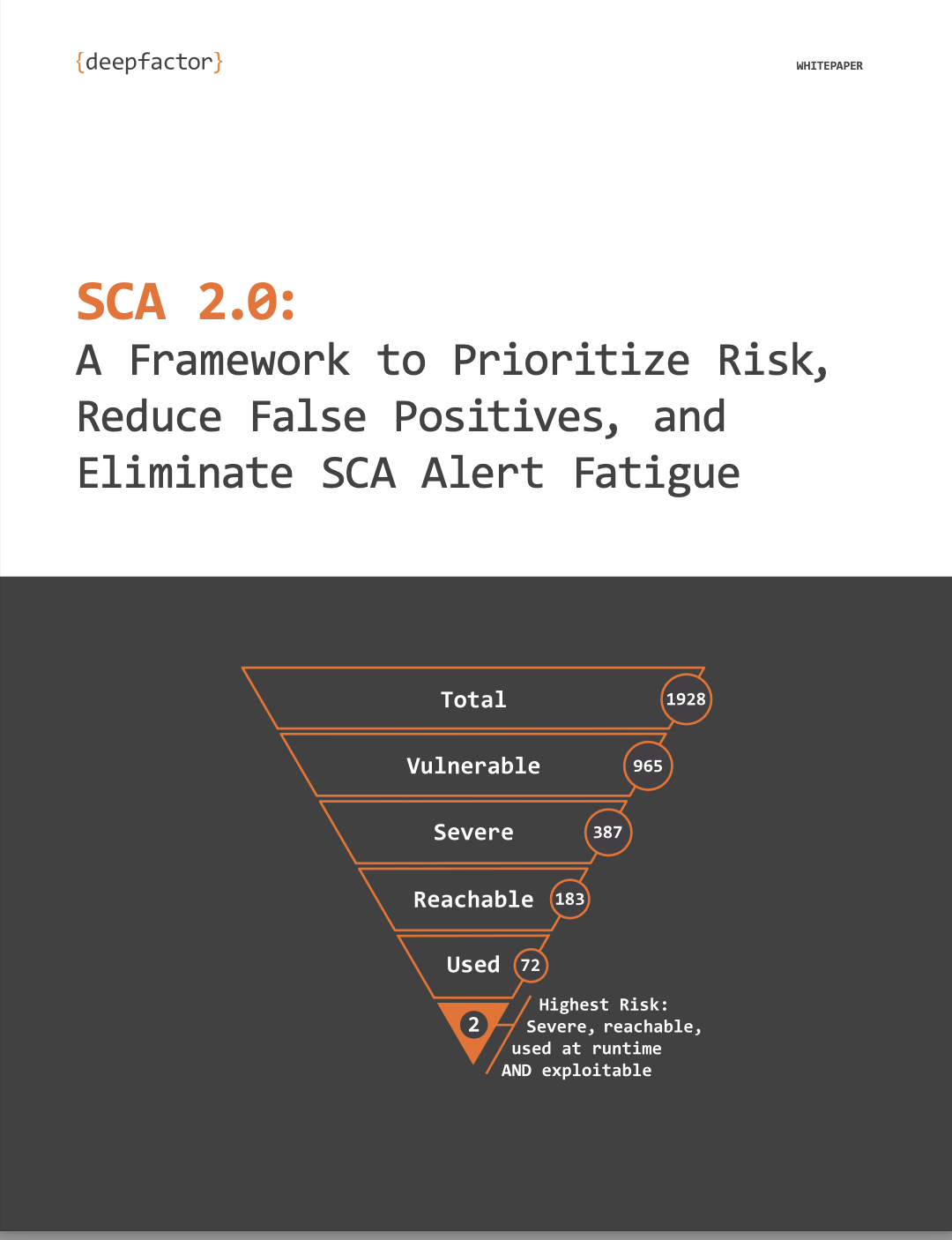What is Container Runtime Security?
Container runtime security means monitoring and analyzing activities within containers, enabling the detection of insecure behaviors across various facets like file operations, network communications, process execution, and memory usage. Ideally, runtime security controls should be integrated throughout the application development process, identifying and addressing security risks during development and testing stages prior to deployment in production environments. Nonetheless, organizations should also adopt a defense-in-depth approach, continuously monitoring applications in production to guard against both new zero-day vulnerabilities and known vulnerabilities that might have been overlooked during development. By actively observing high-risk container behavior in real time, DevOps and security teams can promptly identify and respond to potential security threats, while mitigating application vulnerabilities. This approach facilitates comprehensive visibility into containerized workloads, enabling the detection of malicious activities, unauthorized access attempts, anomalous behavior, and other indicators of compromise.
How Do Container Runtime Security Tools Work?
Container runtime security tools provide continuous monitoring and protection of containerized applications. This involves process monitoring, file system monitoring, network monitoring, and system call monitoring. Here’s an overview of how container runtime security works.
Understanding container basics is essential. Containers share the same OS kernel but are isolated from each other through Linux namespaces, such as pid, net, and mnt. These namespaces provide the isolation needed to ensure that containers don’t interfere with each other or with the host system. Control groups (cgroups) are used to limit the resource usage of containers, ensuring that no single container can monopolize system resources. Union file systems provide the layered file system that containers use, allowing them to be lightweight and efficient.
Despite these isolation mechanisms, containers are vulnerable to several potential threats. Container breakouts occur when an attacker escapes the container to access the host or other containers. Kernel exploits are another concern because containers share the same kernel, meaning any kernel-level vulnerability can affect all containers. Vulnerable applications running inside containers can also be exploited, just as in any other environment.
To address these threats, several key runtime security controls are employed. Containers should be run with the least privilege necessary, avoiding running containers as root whenever possible. Tools exist in the marketplace that provide mandatory access controls, restricting what an attacker can do if they compromise a container. These tools enforce policies that limit the actions a container can perform, thereby reducing the attack surface. Runtime scanning is crucial, as it allows real-time monitoring of container behavior to flag or block anomalous patterns. This involves monitoring system calls, network activity, and file system changes to detect suspicious activities.
Integrity monitoring ensures that the running container’s filesystem remains untampered. This involves checking the integrity of files and directories within the container to ensure that they have not been modified. Network policies, such as Kubernetes Network Policies, limit communication between containers, reducing the risk of lateral movement by an attacker. These policies define which containers can communicate with each other and under what conditions, providing an additional layer of security. Resource limits using cgroups prevent resource-exhaustion attacks by limiting the system resources a container can use. This ensures that no single container can consume all the available resources, thereby affecting the performance of other containers or the host system.
Adopting an immutable infrastructure approach means treating containers as ephemeral and immutable. In this approach, containers are never updated or patched while running. Instead, if a container needs to be updated or patched, a new container image is built and deployed, replacing the old container. This ensures that all containers are always running the latest, most secure version of the software. If a container is compromised, it should be killed and replaced with a known-good instance, minimizing the risk of persistent threats.
Incident response is a critical component of container runtime security. Tools like Sysdig can be used for post-mortem analysis to understand the attack’s impact and root cause. This involves analyzing logs, system calls, and other data to reconstruct the attack and identify how the attacker gained access and what actions they performed. Live response techniques involve isolating a suspected compromised container, taking a snapshot for analysis, and keeping it running to understand the attacker’s actions. This allows security teams to observe the attack in real-time and gather evidence without disrupting the attacker’s activities.
Backup and recovery processes ensure quick restoration of services by maintaining backups of container images, configurations, and data. Regular backups ensure that in the event of a security incident, affected containers can be quickly restored to a known-good state. Continuous monitoring and scanning of containers, images, and orchestrators for vulnerabilities, misconfigurations, and signs of compromise are essential for maintaining a secure environment. This involves using automated tools to continuously scan for known vulnerabilities and configuration issues and taking proactive measures to address any identified issues.
The Benefits of Container Runtime Security
Container runtime security provides several significant benefits. It helps detect threats during the application’s operational phase, such as vulnerabilities being exploited, unusual network activity, or attempts to escalate privileges. Security tools assist organizations in maintaining compliance with various security standards by providing visibility into the runtime behavior of their applications. Early detection of threats allows for immediate response, minimizing potential damage from security incidents. These tools also provide deep visibility into container behavior at the runtime level, aiding in diagnosing and resolving issues.
Visibility is one of the most critical benefits of container runtime security. These tools provide insights into what is happening within the containers, including system calls, network traffic, and file system changes. This level of visibility is essential for detecting and responding to security incidents. Compliance is another crucial benefit. Many regulatory standards, such as PCI-DSS, HIPAA, and GDPR, require organizations to implement robust security controls and maintain visibility into their systems. Container runtime security tools help organizations meet these requirements by providing the necessary monitoring and reporting capabilities.
The Principles of Container Runtime Security
Several key principles underpin effective container runtime security. The principle of least privilege dictates that containers should be given only the privileges necessary to perform their function, limiting the potential damage if a container is compromised. Containers should adhere to the concept of immutable infrastructure, meaning they should not be updated or patched at runtime. Instead, updates should be made to the container image, which is then redeployed. This ensures that all containers are always running the latest, most secure version of the software. Segregation of duties is another important principle; different tasks should be handled by different containers to ensure that a compromise of one container does not jeopardize the entire application.
Container Runtime Security Best Practices
To achieve effective container runtime security, several best practices should be followed. Regularly monitoring containers at runtime is crucial to detect potential threats. Employing dedicated container runtime security tools, such as Deepfactor, provides deep visibility and protection. Regularly updating and patching container images minimize vulnerabilities. Limiting the Linux capabilities of your containers reduces their potential harm if compromised. Using Linux namespaces effectively isolates containers from each other and the host system. Implementing strong access controls limits who can interact with your containers and ensures that only authorized personnel have access.
Regularly monitoring containers involves setting up automated tools to continuously scan for vulnerabilities and monitor for suspicious activities. These tools can alert security teams to potential issues, allowing for quick response and mitigation. Employing dedicated security tools like Deepfactor provides additional layers of protection, as these tools are specifically designed to address the unique security challenges of containerized environments. Regularly updating and patching container images is essential for maintaining security, as it ensures that all containers are running the latest versions of software with all known vulnerabilities addressed.
Limiting the Linux capabilities of your containers involves configuring the containers to only have the permissions and capabilities they need to function. This reduces the potential harm if a container is compromised. Using Linux namespaces isolates containers from each other and the host system, ensuring that a compromise in one container does not affect others. Implementing strong access controls involves setting up policies and procedures to control who can access and interact with the containers, ensuring that only authorized personnel have access.
Conclusion
Container runtime security focuses on ensuring the safe execution of containers. Despite sharing the same OS kernel, containers are isolated from each other using inherent Linux functionalities. The main threats during execution involve container breakouts, kernel vulnerabilities, and internal application compromises. To counter these risks, best practices dictate running containers with the least privileges, enforcing strict access controls, and continuously monitoring their behavior. An effective security posture also incorporates rapid incident response and persistent monitoring to identify and remediate potential vulnerabilities or breaches promptly. Container runtime security is essential for maintaining the integrity, confidentiality, and availability of applications in a containerized environment.
By following best practices and implementing robust security controls, organizations can significantly reduce the risk of security incidents and ensure that their containerized environments remain secure. The use of dedicated container runtime security tools, regular monitoring, and adherence to principles like least privilege and immutable infrastructure are critical components of a comprehensive security strategy. As containerization continues to play a pivotal role in modern software development, container runtime security will remain an essential aspect of maintaining a secure and resilient application infrastructure.
FAQs
What is container runtime security?
Container runtime security focuses on protecting applications running in containers during their operational phase. It safeguards applications against attacks and vulnerabilities that may surface during runtime, rather than during the build or deployment stages.
Why is container runtime security critical in modern software development?
Container runtime security is critical because containers share the same OS kernel, making them lightweight and efficient but also introducing unique security concerns. Vulnerabilities in the kernel can potentially compromise all containers running on the host, and the ephemeral nature of containers can make maintaining consistent security controls challenging.
How do container runtime security tools work?
Container runtime security tools provide continuous monitoring and protection of containerized applications. This involves process monitoring, file system monitoring, network monitoring, and system call monitoring to detect and mitigate risks while the container is operational.
What are the best practices for achieving effective container runtime security?
Best practices include regularly monitoring containers at runtime, employing dedicated container runtime security tools, regularly updating and patching container images, limiting the Linux capabilities of containers, using Linux namespaces for isolation, and implementing strong access controls to ensure only authorized personnel can interact with containers.
Free Demo Signup
Experience the power and efficiency of the Deepfactor Application Security Platform through a live, interactive demo.
SIGN UP TODAY! >


